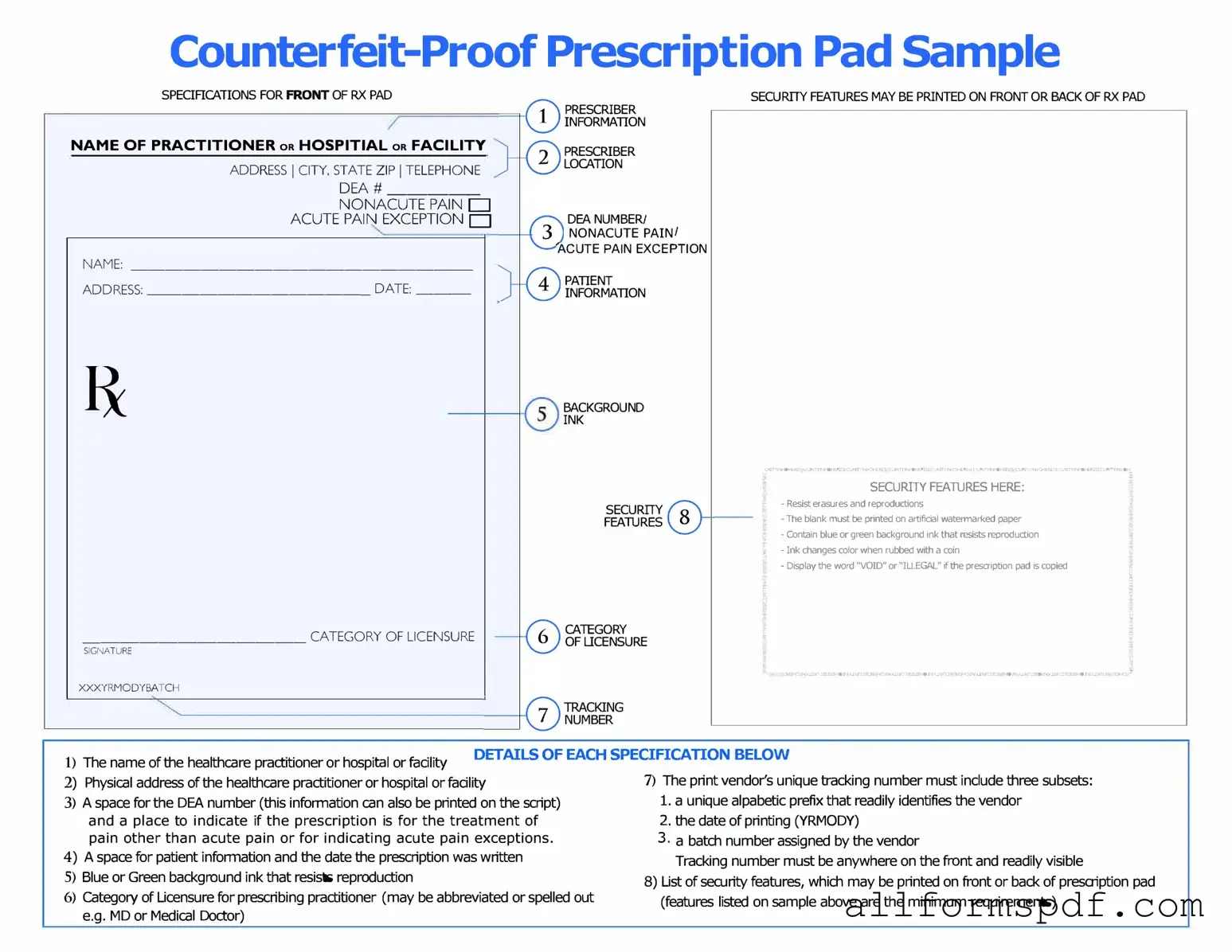When filling out the Prescription Pad form, people often make several common mistakes. One frequent error is not providing complete patient information. This includes missing the patient's full name, date of birth, or contact details. Omitting this information can lead to confusion and delays in processing the prescription.
Another mistake is failing to include the correct medication details. This includes the name of the medication, dosage, and frequency of administration. If any of this information is incorrect or incomplete, it can result in serious health risks for the patient.
Some individuals forget to sign the Prescription Pad form. A signature is essential as it verifies that the prescription is legitimate and authorized. Without a signature, pharmacists may not be able to fill the prescription, causing further delays for the patient.
Additionally, people often neglect to check for allergies or interactions with other medications. It is crucial to note any known allergies or existing medications the patient is taking. This information helps ensure the patient's safety and prevents adverse reactions.
Another common oversight is not specifying the quantity of medication to be dispensed. If the quantity is left blank or is unclear, it can lead to confusion at the pharmacy. This can delay treatment and create frustration for both the patient and the pharmacy staff.
Some individuals also fail to provide clear instructions for the pharmacist. For example, if special instructions or refills are needed, these should be clearly noted on the form. Lack of clear communication can lead to misunderstandings and errors in filling the prescription.
People sometimes forget to include the prescribing physician's contact information. This is important in case the pharmacy needs to verify details or clarify instructions. Without this information, the process may be stalled, causing unnecessary delays for the patient.
Another mistake is using illegible handwriting. If the writing is unclear, it can lead to misinterpretation of the medication details. This can pose serious risks to the patient’s health, so it is crucial to write clearly and legibly.
Lastly, some individuals do not keep a copy of the filled Prescription Pad form for their records. Keeping a copy can help track medications prescribed and ensure that patients have the necessary information for follow-up appointments. It is a good practice to maintain accurate records for future reference.
